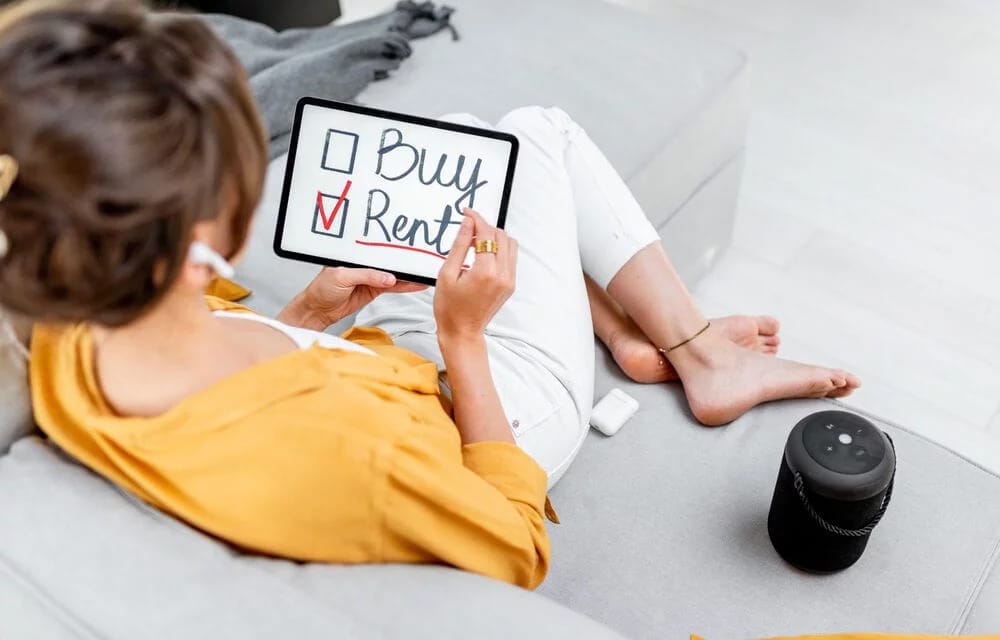What are the help to buy schemes?
There are four different Help to Buy mortgage schemes:
Help to Buy: Equity Loan
This is perhaps the most well-known scheme and is often referred to as simply Help to Buy.
What Is The Help To Buy: Equity Loan?
This Help to Buy scheme offers a government loan to help both first-time buyers and home movers pay a larger deposit towards a new-build property (older properties do not qualify). The property must cost no more than £600,000 (£300,000 in Wales) and must be your only residence. You cannot rent it out or borrow more than 4.5 times your total household income.
You need a deposit of at least 5% from your own funds and the government will then lend you up to 20% of the property value (or 40% in London). This will give you a 25% deposit in total (or 45% in London).
How Does The Help To Buy: Equity Loan Work?
The best way to explain is with an example:
For a £400,000 property in London, you’d need to save a minimum £20,000 deposit (5% of the property’s value) to unlock a £160,000 loan from the government. This will give a total deposit of £180,000.
With the government loan, you’d only need a £220,000 mortgage compared to £380,000 without it, meaning your repayments will be far lower because, as a general rule, the bigger deposit, the lower the interest rate.
The maximum loan in England is £120,000 (or £240,000 in London). There is no minimum amount of equity loan – so in areas with low house prices the deposit you’d need would be low. For instance, if a flat cost £80,000, you would only need a deposit of £4,000 alongside a government loan of £16,000.
All this might sound great, but remember, you will need to pay the government back…
You can apply for the Equity Loan in its current form until April 2021. The scheme was originally meant to end in April 2021, but instead it will be watered down. From then until March 2023 (the new deadline), the scheme will be open to first-time buyers only and will include regional property price caps. The price cap in London, for example, will remain at £600,000, but in the less-costly north-east the cap will be £186,100.
When Do You Repay The Equity Loan And How Much Does It Cost?
The loan is interest-free for the first five years during which you’ll need to pay a £1 monthly management fee.
In year six you pay interest of 1.75%, and then the rate increases annually by the retail price index (RPI) measure of inflation rate plus 1% (which currently comes to around 4%). For instance, in year seven you might have an interest rate of 1.87%, then 1.95% in year eight, 2.03% in year nine, and so on.
The rate of interest on the equity loan is fairly low, but it can still add significantly to your monthly repayments, especially if you borrowed the maximum amount. Using the figures from the London property example above, the interest in year six alone would be £2,800. Remember, that’s on top of your mortgage repayments.
You can repay the equity loan at any time without penalty, but you must do so in chunks of 10% or 20%. You must repay the loan fully after 25 years, when you sell the property or when your mortgage term finishes – whatever happens first.
The government loan is repaid at the property value at the time of sale, meaning you could repay more or less than the loan amount depending on if your house goes up or down in value.
So, if you sell your £400,000 London property for £450,000, and you took the full 40% equity loan (in other words £160,000), you’d repay the government £180,000 – that’s £20,000 more than you originally borrowed.
However, if property prices fall and yours was only worth £380,000 when you come to sell it, you’d only need to repay £152,000, which is £8,000 less that you borrowed.
To take out a Help to Buy Equity Loan you need to contact your local Help to Buy agent.
Help to Buy: Shared Ownership
What Is The Shared Ownership Scheme?
This scheme allows you to buy between 25% and 75% of an ex-council or new-build property. You take out a mortgage for the proportion that you own, and pay rent on the remaining share. If you’re buying a new build, that share is owned by the property developer but if you’re buying an ex-council property, it’s owned by the housing association.
How Does The Shared Ownership Scheme Work And How Much Does It Cost?
You must either be a first-time buyer, an ex-homeowner or already be a shared owner who is looking to move. Your total household income cannot be more than £80,000 (or £90,000 in London). There are independent schemes available for London, Scotland, Northern Ireland and Wales.
There are also separate but similar Shared Ownership schemes for people with long-term disabilities and for people aged 55 and over.
With Shared Ownership, you agree a mortgage with a lender who’s prepared to lend for Shared Ownership properties (not all are) – and then save up a deposit of at least 10%, plus money to cover stamp duty, legal fees and moving costs.
If you want to buy a 25% share of a property valued at £500,000, for example, your share will cost £125,000. You’ll need a deposit of 10% (that’s £12,500) and a mortgage for the remaining £112,500. The housing association (or property developer) owns the other 75% of the property and that’s the part you pay the subsidised rent on.
In this instance, the rent would be £11,250 per year or £940 per month. What you pay will vary from property to property but it’s usually around 3% of the equity owned by the housing association.
You’ll also often need to pay a service charge and/or ground rent because shared ownership properties are primarily leasehold.
Can I Increase My Equity In A Shared Ownership Home?
If you can afford to, you can gradually buy more of the property from the housing association. This process is known as “staircasing”. Note that the rent you’ve paid on the share owned by the housing association does not equate to buying more the property. Rent is just rent!
The cost of acquiring more equity in the property depends on its current market value, so it could go up or down.
You can eventually own 100% of the property but you might not be able to acquire the freehold. If that’s important to you, be sure to check with the housing association before you buy.
Help to Buy ISA
The Help to Buy ISA is a tax-free savings account aimed at helping first-time buyers save for a deposit. The government pays a bonus of 25% for every £200 saved. The scheme is closing on 30 November 2019.
How Do I Get A Help To Buy ISA?
Help to Buy ISAs are only available for first-time buyers wanting to buy a home worth up to £250,000 (or £450,000 in London). Unlike with Help to Buy equity loans, the property doesn’t have to be brand new.
Help to Buy ISAs are available on an individual basis to people aged 16 and over. If you’re buying a property with your partner who is also a first-time buyer, you can each have a Help to Buy ISA and effectively double the bonus you get. If one of you has already owned a home that person can’t get a Help to Buy ISA, but the other one can.
How Does A Help To Buy ISA Work?
You can open a Help to Buy ISA with any bank, building society or credit union that offers one – not all do.
You’ll receive interest on your savings; the rate is usually comparable to a cash ISA. You don’t get interest on the government bonus because that’s not paid until you withdraw your cash to buy a property. Help to Buy ISAs run for a maximum of five years.
There are rules on how the scheme works alongside other ISA products:
- You can’t open a cash ISA and a Help to Buy ISA in the same year
- You can’t open one on behalf of someone else
- You can use the Help to Buy ISA scheme in conjunction with the Help to Buy: Equity Loan scheme
- You can only have one Help to Buy ISA at any time but you can transfer your ISA to another provider
How Much Is The Bonus?
For every £200 saved, the government pays a £50 bonus, up to a maximum of £3,000. You can pay £1,200 in the first month and then up to £200 a month. So, the maximum you could save in your first year is £3,400 and then £2,400 every year after that.
You’d need to save £12,000 to get the maximum government bonus (which would take exactly four years and seven months). Even if you save more than £12,000, you’d still only get a £3,000 bonus.
If you’d like to put more money into savings, you should take a look at the Lifetime ISA. You can have both a Help to Buy and a Lifetime ISA at the same time, even though the Lifetime ISA is technically a cash ISA.
What Are The Rules On Saving?
The limits on how much you can save are set monthly. This means that if you don’t pay the full amount of £200 in one month you can’t pay more the following month to make it up to the yearly maximum of £2,400.
The minimum government bonus is £400, so the lowest amount you can save to qualify is £1,600. If you want to buy a home earlier, and you close your account without saving £1,600, you won’t get a bonus but will still get the interest you earned on your savings tax-free. The scheme is open to new savers until the end of November 2019. You can save into it until December 2029 and the bonus is available if you use it for a deposit by December 2030.
How Is The Bonus Paid?
The bonus is paid in one lump sum only once it’s confirmed that the property purchase will go ahead. It must be claimed by your solicitor or conveyancer between exchange and completion and is put towards your overall deposit.
You can use the bonus with any qualifying mortgage and you don’t have to get a mortgage from the same institution that provides your Help to Buy ISA. You can combine your Help to Buy funds with other savings to make up your complete deposit.
Figures published by HM Treasury show that from when the scheme began in December 2015 to the end of March 2018, £157 million in bonuses was paid out to 196,007 first-time buyers, who had an average age of 27.
You can use the bonus with any qualifying mortgage and you don’t have to get a mortgage from the same institution that provides your Help to Buy ISA. You can combine your Help to Buy funds with other savings to make up your complete deposit.
Figures published by HM Treasury show that from when the scheme began in December 2015 to the end of March 2018, £157 million in bonuses was paid out to 196,007 first-time buyers, who had an average age of 27.
Lifetime ISAs
A Lifetime ISA (LISA) works in a very similar way to its Help to Buy counterpart. Both allow tax-free savings and both give a 25% bonus which is paid by the government. The bonus is paid in with the same frequency you contribute to the pot. So, if you pay in monthly, so does the government.
However, where a Help to Buy ISA only lets you save a max of £2,400 per year (£3,400 in year one), with a LISA you can save up to £4,000 per year meaning your maximum bonus is £1,000 per year. The LISA can remain open for 32 years.
With a LISA, your funds are locked away for the first year – if you try to withdraw earlier not only will you not get the 25% bonus, you’ll also have to pay a fee.





